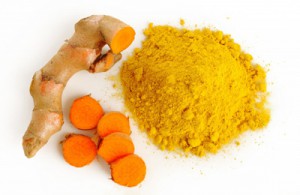That Yellow Spice is 600 Times as Nice!
Turmeric is gaining serious popularity these days, after only centuries of existing on earth and used by many cultures as a healing agent.  Presently it is one of the most thoroughly researched plants with it’s medicinal properties (primarily curcumin) being the subject of over 5000 published biomedical studies. In fact, after a five-year long research project conducted by GreenMedInfo, over 600 potential preventative and therapeutic applications for turmeric, as well as 175 distinct beneficial physiological effects have been discovered. Pretty darn amazing!
Presently it is one of the most thoroughly researched plants with it’s medicinal properties (primarily curcumin) being the subject of over 5000 published biomedical studies. In fact, after a five-year long research project conducted by GreenMedInfo, over 600 potential preventative and therapeutic applications for turmeric, as well as 175 distinct beneficial physiological effects have been discovered. Pretty darn amazing!
What exactly is turmeric and what can it do for us? Here are some excerpts from a few articles written to inform us on the powerful healing qualities of this completely natural, and freely growing root.
 Turmeric: “The Golden Goddess”
Turmeric: “The Golden Goddess”
The most well known medicinal action of turmeric is its use as a powerful anti-inflammatory, the effectiveness of which is comparable to pharmaceutical medicines. However, it also acts as an analgesic, antibacterial, anti-inflammatory, anti-tumor, anti-allergic, anti-oxidant, antiseptic, antispasmodic, astringent, digestive, diuretic, and stimulant. Phew!
Turmeric has been proven effective in treating some of the most intense ailments afflicting the world today including: Arthritis, Cancer, Alzheimer’s Disease, Diabetes, Multiple Sclerosis, Atherosclerosis, HIV/AIDS, Sexually Transmitted Diseases (Hepatitis-C, Genital Herpes) , Irritable Bowel Syndrome, Indigestion, Inflammation, Acne, Urinary Tract Infections, Kidney Infections, Gallstones, Anemia, Hemorrhoids, Liver Disease, Leprosy, Amenorrhea, Edema, Bronchitis, Common Cold, Headaches, Conjunctivitis, Bursitis, food poisoning, parasites, fever, diarrhea, poor circulation, lower back and abdominal pain. Holy baloney! Eww…don’t ever eat baloney btw.
Thinking about having a baby? Turmeric helps balance the female reproductive and lactation systems, and in men it purifies and improves the health of semen. Giddy up!
Basically, due to its vast array of medicinal purposes and versatility, turmeric is one of the most important
herbs in any natural medicine cabinet.
What exactly is this stuff?
Turmeric is commonly found in Indian curries, giving the food a golden orange color. It has also been used as a dye for mustards, canned chicken broth, and pickles. In combination with annatto, turmeric is used to color cheese, dry mixes, salad dressing, butter and margarine…but that doesn’t mean you should eat this stuff. The brilliant color has also been used for dyeing silk and wool; the robes of Buddhist monks were traditionally dyed with turmeric.
It was originally used in curries and other food to improve storage conditions, palatability, and preservation. Because of its preservation properties, turmeric played a vital role in survival and sustainability in South Asia , and was valued more than gold and precious stones.
It has been used by Ayurvedic healers as medicine taken internally in the form of fresh juice, boiled tea, tinctures, or powder, and topically as creams, lotions, pastes, and ointments.
Milk boiled with turmeric and sugar was a popular cold remedy and turmeric juice was used to help heal wounds, bruises, and leech bites.
A paste made from turmeric, lime, and salt was commonly applied to sprains and inflamed joints.
Due to the overwhelming number of health benefits the plant offers, it is no wonder that researchers are able to compare turmeric to drugs that you can buy at the pharmacy. Turmeric is said to have the same effects as the following medications:
- Metformin– glucose sensitivity
- Ibuprofen– pain management and anti-inflammatory
- Aspirin– used as a blood thinner. Turmeric can be used to treat patients who have problems with severe blood clotting as well as those who need therapy for their arthritis.
- Prozac– treating depression
- Lipitor– reduce blood pressure and improve blood vessel function
How to use Turmeric at home:
Look for turmeric in the spice aisle at the grocery store, or at any bulk food store. Start by adding 1/2 tsp to any curried soup or sauce, and any other savoury creamy recipe you feel like experimenting with. If you’re not sure start with just 1/4 tsp. You can also add a pinch to your morning smoothie or glass of warm milk before bed. FYI coconut milk and turmeric are a perfect pair in most applications.
RECIPE:
Coconut Curried Chickpeas anyone? Check out this recipe from KATK with a yummy turmeric-kissed vegetarian curry. Tomorrow is ‘Meatless Monday’, so what a perfect meal to make!
http://www.kateandthekitchen.com/recipe-items/coconut-curried-chickpeas/

Hi, I'm Katie!
I am a nutritionist, chef, mom to two little ones, and a lover of food!
I hope you enjoy my recipes and food blog. Feel free to reach out if you have any questions.
